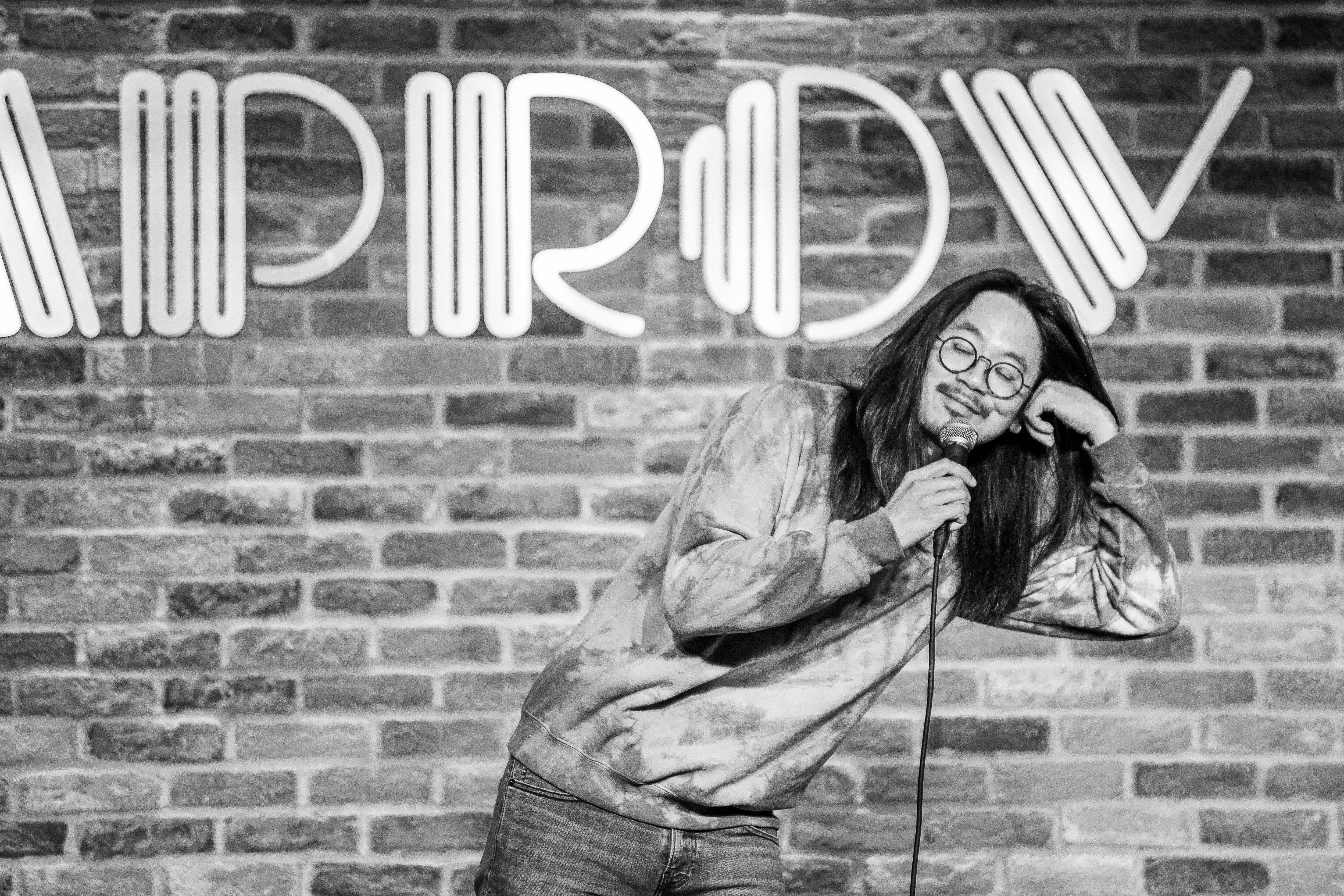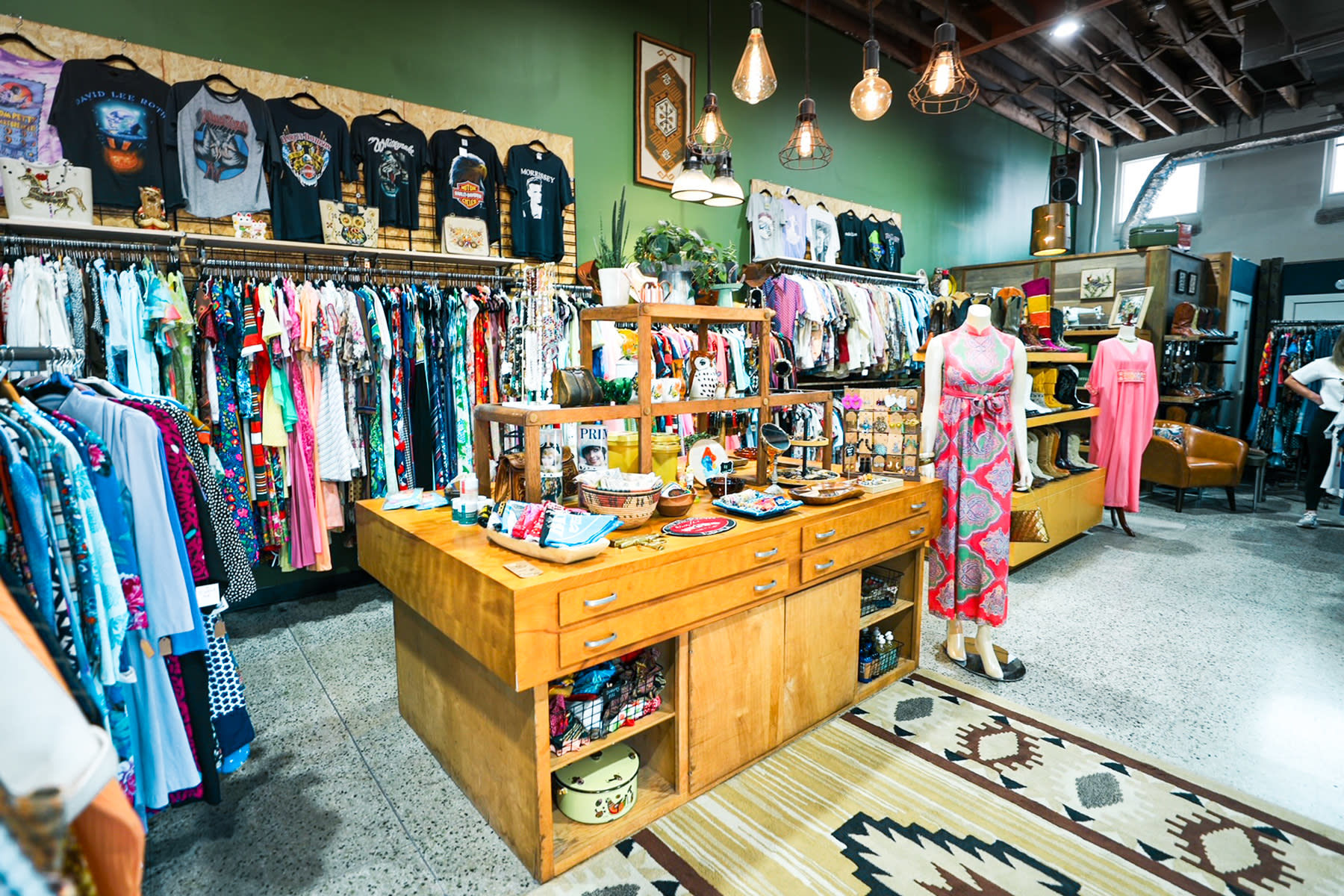How Horni Tonk Tuesdays Sparked a Houston Honky-Tonk Revival
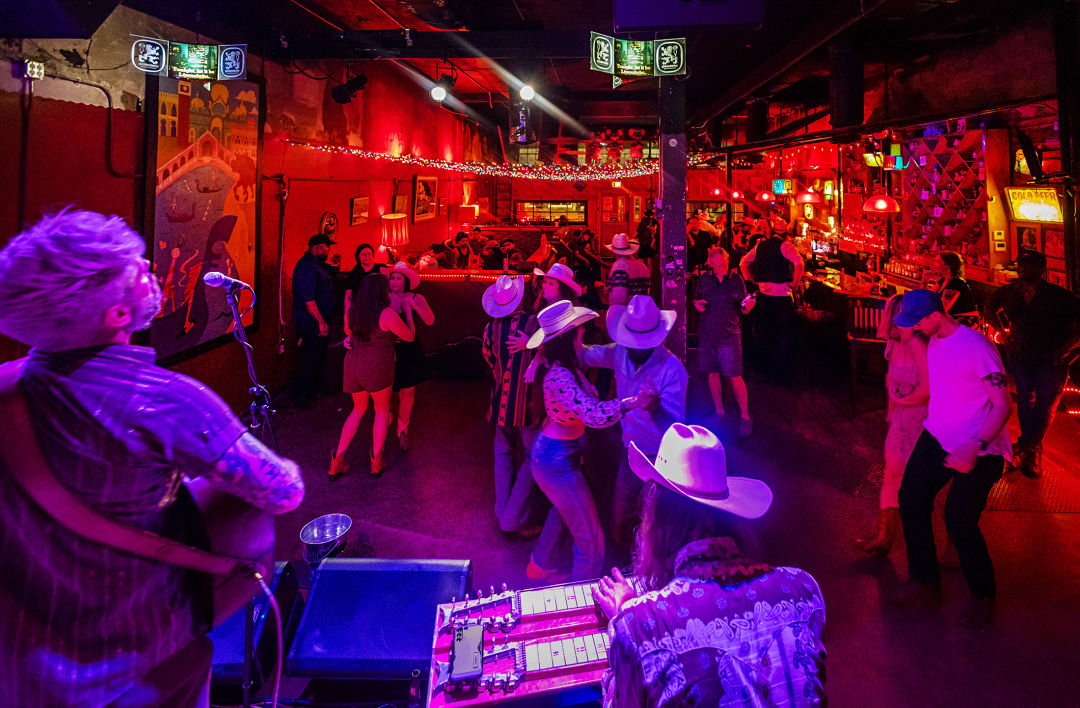
Image: Emily Jaschke
There’s a honky-tonk scene in Houston, but like most gems nestled in this big, beautiful sprawl, you have to know where to go to find it. It’s not in a stereotypical barn with sawdust on the floor. Nor is it in one of the city’s sun-bleached strip centers. Instead, it’s nestled in Midtown in Shoeshine Charley’s Big Top Lounge.
Head to the Big Top on any given Tuesday night, and you’ll find dancers bathed in the soft glow of red neon. Pedal steel guitar rings out over the chirps of the light-rail just outside. “You walk in that door, it doesn’t matter who you are,” says Christopher Seymore, Horni Tonk’s cofounder and current ringleader. “It doesn’t matter what you look like, where you’re from. It’s just being there in the moment, together.”
The world inside is nostalgic but new, niche yet inclusive, loose yet often downright virtuosic. The musicians and regulars who gather in the bar call themselves the Houston Horni Tonk Society.
Tall and lean with a pompadour, self-deprecating wit, and a growing catalog of smart original songs, Seymore convinced the Big Top’s Allen Hill to book him for a Tuesday-night residency in 2022. He needed a name for the weekly show. “Calling something ‘horni’ is a Tweek-ism,” Seymore says with a laugh, referencing his musician friend South Texas Tweek. “Tweek’d use it to describe anything great, from tacos [to] Johnny Paycheck. There are way too many ‘Honky Tonk Tuesdays,’ so we thought, why not take a risk?”
Seymore and other artists began referring to themselves as members of the Houston Horni Tonk Society, and the name stuck. “We all became card-carrying members,” Seymore says. And he’s not just speaking figuratively: They made physical cards, as well as matchbooks and other merch with mascot Buford the horny toad.
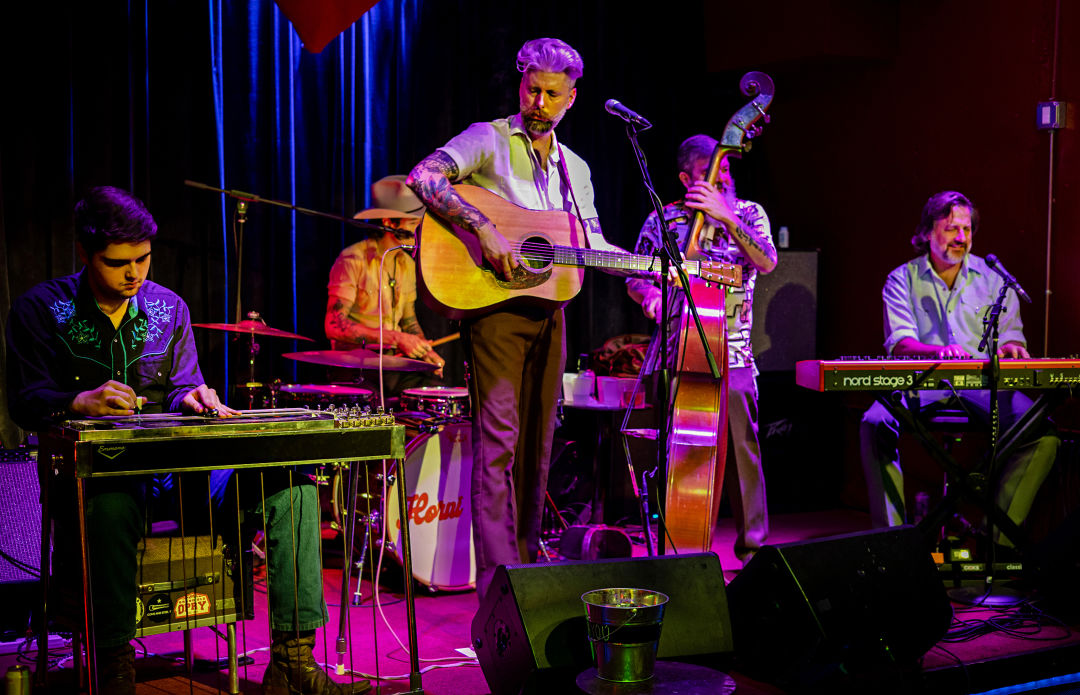
Image: Emily Jaschke
Today, Seymore still presides over Horni Tonk Tuesdays and, at some point in the night, takes the stage along with his band, the Western Cosplay. Avery Davis, the group’s drummer, says he frequently stands in awe of his company—Caleb Lindley on pedal steel, Randy Lindley on upright bass, and Damian O’Grady on keys. “Often, I’m just smiling onstage while I’m playing,” he says. “I’m listening to everyone around me, [thinking], ‘I can’t believe I get to play with these guys right now.’”
In addition to a cadre of local artists supporting one another, Horni Tonk Tuesday attracts scores of inked-up revelers donning vintage jeans, sundresses, and boots, ready to shuffle and be seen. “When Horni Tonk first started, there were a handful of regulars who’d come every week,” says Leslie DeHaven, a visual artist and longtime bartender at the Big Top. “Every time somebody new would show up, they’d walk up to them and say, ‘What’s your name?’”
All of Houston shows up, be they construction workers, astrophysicists, classically trained musicians, restaurant veterans, nurses, writers, business travelers, plumbers, or artists. “It’s just a little slice of Americana,” Seymore says. “People want to see the real thing, and we’re a place where you can.”
Building a scene that stays
Horni Tonk started three years ago, but its communal roots run deeper. During the height of the pandemic, Seymore and fellow Houston musician Patrick B. Ray launched a song swap dubbed Seymore’s Sunday Shootout and the Getting Loose and Killing Time podcast, which featured interviews with other indie country songwriters. The duo devised the perfect draw for road-weary troubadours who served as guests: $250 pay, a place to crash, and the promise of a home-cooked meal—steak, swordfish, and vegetarian feasts, plus the occasional boon of wild game Ray hunted himself.
When Seymore began his weekly residency at the Big Top, he brought his hospitality with him. Horni Tonk Tuesdays were born.
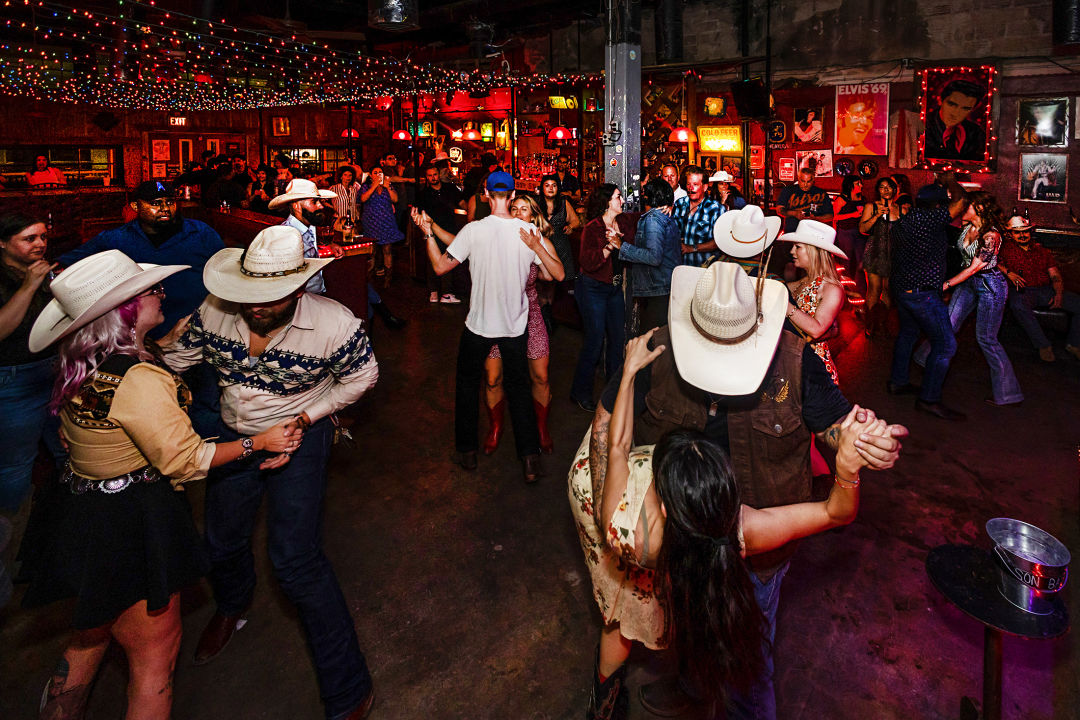
Image: Emily Jaschke
While he acknowledges—and actively combats—challenges plaguing Houston’s creative economy, Seymore is also blunt about the city’s assets. While various music scenes in New York or Los Angeles are well entrenched, Houston offers a more affordable alternative. “The cost of living here is unbelievable for artists. There’s freedom in that,” he says, though he acknowledges that it’s still hard to make a living anywhere as a full-time musician.
Seymore praises collaborative Houston venues, like the recently remodeled Dan Electro’s, as an integral part of the scene’s backbone. While satisfying locals, Horni Tonk’s one-two punch of venue infrastructure and built-in audience also created a dependable platform for mid-tier touring bands to play in Houston, which can be a tough market for even established artists to crack. “I had been trying to play Houston for years,” says Dylan Earl, an acclaimed singer-songwriter based in Northwest Arkansas, noting that he once considered areas between New Orleans and Austin “a dead spot” for music bookings. “You look back at Houston in the ’60s, ’70s, [and] ’80s, and some of the greatest songwriters—Townes Van Zandt, Guy Clark—were hanging out there. I thought, ‘Where do we play? Millions of people live there now. Surely, there’s a thing.’”
But for Earl, finding that “thing” proved elusive. Cue Seymore and his crew, who brought Earl into the Horni Tonk fold. Now Earl, who released a new album, Level-Headed Even Smile, in September, has a standing Houston invitation—and he’s been spreading the word about the city’s DIY music scene. Traveling musicians like him, who stop in Houston to perform rather than coasting through on I-10, are a gift to local music lovers and players, and not just because of the shows they put on while they’re here. The connections cultivated allow Houston bands like Seymore’s to take their songs to other locales, and reinforce (or even introduce) the reality that, yes, Houston is a music town.
“Honestly, I would never have been able to go on my first tour were it not for Dylan,” says Seymore, noting that Earl booked him as his opening act, which accounted for half of Seymore’s tour.
The soundtrack of a community
The friendships may be strong, but so is the music. That’s part of what has emerged from Horni Tonk’s camaraderie and consistency: a signature Houston sound, built on swampy steel strings, devastating lines, and the resurrection of the waltz. Here, the danceable tear-jerker in 3/4 time that defined Golden Era country music remains romantic, but with a bold wryness coursing beneath. Instead of adopting Nashville’s high-gloss finish, Houston lets its waltzes, barroom parables, and ribald shuffles snake and breathe—like a bayou.
Seymore, now a central voice in Bayou City honky-tonk, records close to home. Pedal steel maestro Kevin Skrla produced Seymore’s debut album, King of Nothing, at his Wolfe Island Recording studio in Dayton, Texas, less than 40 miles northeast of Houston proper. Seymore writes and collaborates regularly with locals, too, including friends and characters like South Texas Tweek. He sees no reason to relocate to Nashville or another one of the better-known music hubs—not because he can’t, but because he doesn’t need to.
In this city—the birthplace of Urban Cowboy’s slick redneck cool, Lightnin’ Hopkins’ free-form blues, and DJ Screw’s chopped-and-screwed sound—musical movements don’t just echo the past. They have reshaped local listening habits and global sounds.
For some, Horni Tonk’s late weeknights feel like the successor to another bygone Houston tradition: Whiskey Wednesdays at Fitzgerald’s. Around 2010, a green (but already brilliant) Robert Ellis and other ferocious young musicians, including a baby-faced Will Van Horn, were sharpening their sound. Davis says a comparison to Ellis, Van Horn, and the rest of the Whiskey Wednesday crew is the highest compliment he can think of. “I was in high school when they were at Mango’s and Fitzgerald’s, and Whiskey Wednesdays were blowing up. They were very influential for me,” the drummer says. “I just remember thinking, ‘This is so cool. I want to be a part of this.’”
Embracing that longing to feel like a part of something undergirds Horni Tonk’s magic. When bartender DeHaven was diagnosed with breast cancer in 2024, the Horni Tonkers rallied, organizing a fundraiser to help offset the cost of treatment. “I don’t know too many communities like that—that would pull together in such a way,” DeHaven says.
Despite Horni Tonk’s accomplishments, Seymore’s response to any praise isn’t just humble, it’s practical. Building a network and creating meaningful art are inseparable.
“The product has to be good. It takes time to cultivate yourself as an artist—to break your tendencies and learn new ways of doing things,” he says. But more than that, “it takes relationships—not unadulterated self-promotion,” he adds. “That only gets you so far.”
If you go: Horni Tonk Tuesdays, 8pm; Shoeshine Charley’s Big Top Lounge in Midtown, 3714 Main St; $10, ages 21 and up unless accompanied by a parent.


